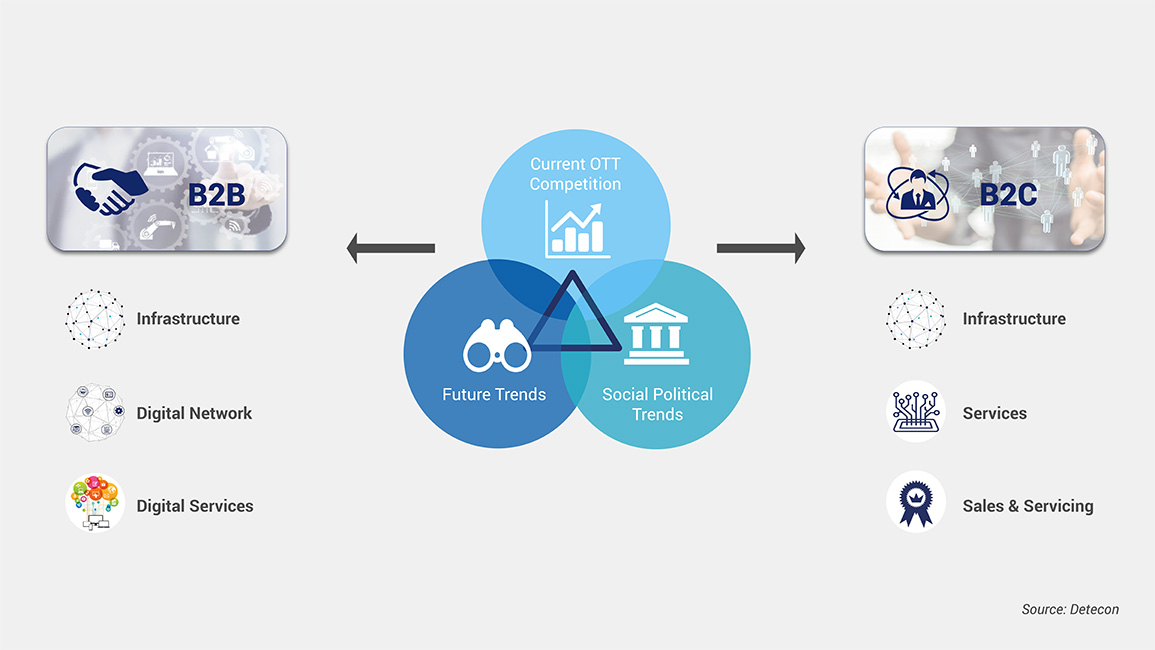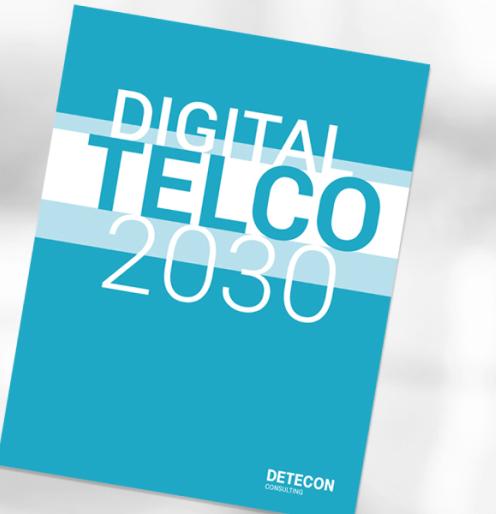- Home
- Consulting
- Industries
- Telecommunications
- Focused Innovation
Innovation
Your Right to Win
After the first wave of disruptive changes for carriers through Over-The-Top(OTT) players, the next wave of changes is already coming to the industry: all players are experiencing new and stricter guidelines for handling data worldwide. In addition to this new upsurge in regulations, carriers are also experiencing major changes in the way they handle algorithms, new user behavior or emerging business models.
But what is the right to play and the right to win for carriers? In which fields of innovation should this industry enter in the future? There are two perspectives: business-to-business (B2B) and business-to-customer (B2C):

Fields of Innovation for Carriers
There are a multitude of innovation fields for carriers, which should be focused on using a variety of technologies and methods such as data analysis, design thinking and partnering in order to continue to play a dominant role in the market in the future.
Business-to-Business(B2B)
Looking at the value chain of a carrier in the context of B2B, there are various starting points for the intensification of various fields of innovation.
A core business of this sector is the provision of the physical infrastructure (mobile phone antennas, fiber optics). Here, it is possible to maintain the network quality at a consistently high level. Parameters such as latency and availability for business applications are becoming increasingly critical for every large customer, as a breakdown of production machinery, for example, could result in losses running into millions in a very short time.
The second major block in the value chain is that of the digital network provider. Here, too, there are various approaches to differentiate through innovation. One possibility is the slicing of networks. The provision of virtual and freely configurable slices enables a variety of industry- and customer-specific solutions. Depending on requirements, the customer can define various parameters, e.g. the amount of data transmission. Nokia already offers first solutions in this field, such as the "Network Operations Master", a software-based cloud-native architecture.
The third field of the chain is the complete offer for major customers in the form of a digital service provider. With the help of various partners from the digital world, major customers can purchase a complete package for their solutions. Each partner focuses on its own potential and complements it with the advantages of the other. The choice of cooperations is enormous and offers plenty of room for innovation. One example is the Deutsche Telekom subsidiary T-Systems, which has entered into a cooperation with SalesForce: this enables corporate customers to create more customer-specific offers based on user analyses.
To be successful in B2B business in the future, two things are emerging: "no touch" processes for "standards" and the management of business ecosystems.
Business-to-Customer(B2C)
This perspective focuses on the private customer business of telecommunications service providers. Here, too, the value chain can be divided into three components and there is room for innovation in each area.
In the area of coverage & capacity, the focus is on the user experience in the end customer's own home. Devices and services are used both at home and on the move. The desire of households is to have a simple promise from just one provider and always a complete range of products and services - and not a separate one for each application such as TV, Internet, fixed or mobile. Deutsche Telekom is already offering an initial comprehensive package. These packages can be expanded as required, including special gaming offers.
The second aspect of value creation comes under the heading of service & experience. End customers increasingly see their privacy as a valuable asset and want their providers to provide them with the right solution. One possibility would be secure authentication of applications, as Telefónica is already implementing in partnership with Averon. In addition, identification with the regional environment and thus the users' desire for content with a regional reference is also important. In this context, the Orange carrier in France has entered into a cooperation with a provider of newspapers and magazines to generate local newspapers as an additional offer for users.
The third area of the value chain deals with sales & servicing. This includes the continuous expansion of the existing offering with additional services, such as new data-driven business models. South Korean Telekom launched its own high-resolution virtual reality media service with a range of immersive content for its users. They also aim to create their own VR platform and secure VR content through partnerships with providers. This offer is only available as a customer of the carrier.
To meet tomorrow's customer expectations, carriers must both improve their current infrastructure and develop personalized shopping and usage experiences based on data-driven business processes.
Get in touch with us






